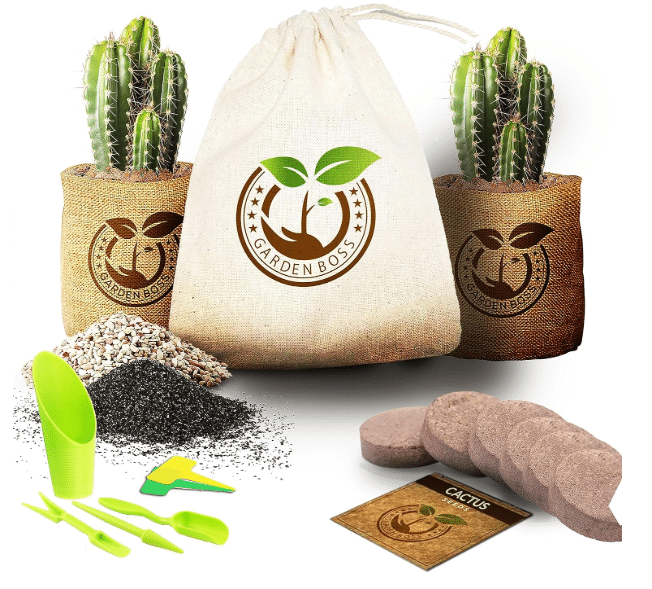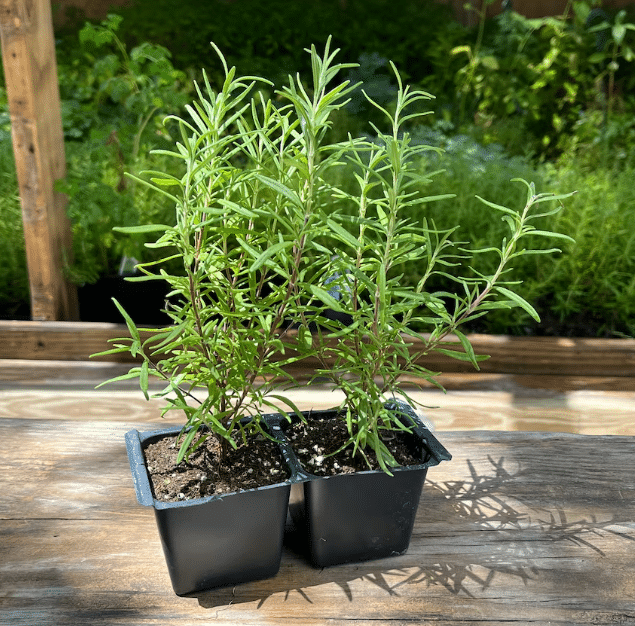How To Sell Plants Online in 2025
Contents

Whether you’re interested in dropshipping plants or growing your nursery, the booming online plant market is full of opportunities, making it an ideal time to dive in.
According to Statista, the global indoor plants market is expected to grow from USD 10.45 billion in 2023 to USD 14.72 billion by 2032, indicating that the market for online plant sales is rapidly expanding.
But you might have a few questions in mind like: What plants should I sell? How do I price them? And how do I handle shipping?
Don’t worry—Sell The Trend has you covered with a comprehensive guide that takes you through every step, from choosing the perfect plants to scaling your business for long-term success.
Let’s explore how you can turn your love for plants into a thriving business and make that green thumb of yours work for you!
Key Takeaways
Setting Up Your Online Plant Business
Dropshipping Plants VS Growing Your Own

When deciding between dropshipping plants and growing your own, it’s important to consider the pros and cons of each approach. Here’s a quick comparison to help you decide which one fits your business style and goals.
| Aspect | Dropshipping Plants | Growing Your Own Plants |
|---|---|---|
| Initial Investment | Low – No need for inventory or storage. | High – Costs for growing, equipment, and space. |
| Control Over Product | Limited – Relies on suppliers for quality and delivery. | Full control over quality and plant care. |
| Time Commitment | Low – Focus mainly on marketing and sales. | High – Requires time to grow, care for, and ship. |
| Profit Margins | Good enough – Suppliers take a cut of the profit. | Higher – No middleman, you keep all profits. |
| Shipping & Handling | Handled by suppliers, no hassle for you. | You manage packaging and shipping logistics. |
| Scalability | Easy to scale without needing more space or resources. | Limited space and resources for growing plants. |
| Customer Satisfaction | Depends on supplier reliability. | Higher – You control the customer experience. |
Which Option Is Best for You?
If you’re looking for a low-risk, low-effort way to start, dropshipping is the way to go. You can sell plants online without worrying about inventory or shipping.
On the other hand, if you’re passionate about plants and have the time and space, growing your own lets you have more control over your business, potentially leading to better profits but requiring more effort.
The best choice depends on your goals, resources, and target audience.
Sourcing Plants For Your Ecommerce Store

If growing plants isn’t your thing, you can source them from nurseries, greenhouses, or professional growers. Look for suppliers offering competitive prices or added benefits like expert advice and support.
Also, plant availability varies with the seasons, so you may need to adjust your offerings. It’s also wise to work with multiple suppliers to avoid disruptions. Local suppliers can help reduce shipping costs and delivery times, and fostering strong relationships with them can lead to better deals.
Alternatively, you can dropship plants from platforms like AliExpress, Cjdropshipping, or Alibaba for bulk orders without the hassle of growing them yourself.
Conducting Market Research For Online Plant Business
In 2022, the plant industry market size grew to $18.5 billion, highlighting its increasing popularity. However, succeeding in this competitive market requires careful research, including identifying trends, managing seasonal changes, and analyzing competitors—tasks that can be daunting for newcomers.
Sell The Trend simplifies this process with advanced product research tools, enabling users to track trending plants, evaluate competitors’ offerings, and understand customer preferences, making it easier to thrive in the industry.
Building an Ecommerce store

Building a website for your business is simple. Avoid a complex ecommerce platform like Shopify, instead go for SellShop. It offers easy-to-use tools and beautiful templates to quickly launch your website.
With clean designs, high-quality images, and SEO-optimized product descriptions, your online shop will attract plant lovers and rank well on search engines. Plus, it’s mobile-friendly, ensuring a smooth shopping experience for customers browsing on their phones.
Adding Products To Store
Keep your plant listings organized and up-to-date without the hassle. Sell The Trend streamlines your business by automating tasks like sourcing niche plants, uploading images and descriptions, and updating prices on your website.
With just one click, you can import trending items, manage stock, and customize details, all seamlessly integrated with your ecommerce store.
See here how easily you can import products to your store.
Creating Product Descriptions
Since customers interact with your store entirely online, showcase clear, high-quality images and provide detailed product descriptions. Include information like plant species, care level, and other essential details to help buyers make informed decisions.
Choosing A Niche To Sell Plants Online
From popular indoor plants to rare and exotic species, choose a niche that excites you. Skip the crowd-pleasers and focus on what’s trending and aligns with your passion.
Trending House Plants
- Succulents and Bamboo: The most popular house plants known for their low maintenance are succulents (like aloe and jade) and bamboo (especially lucky bamboo). They are great options for dropshipping. They thrive in small spaces and are easy to ship due to their durability

- Herbs: Herbs like basil, thyme, and rosemary are in demand as more people embrace home cooking. They require minimal care and are easy to ship, making them a solid choice for online plant businesses.

- Ornamental Grasses: Hardy and stylish, ornamental grasses like fountain grass and pampas grass are ideal for customers seeking low-maintenance plants. They’re easy to pack and ship and add texture to any space.

Best plants for small spaces and indoor gardens
Plants like snake plants, pothos, and spider plants are perfect for small indoor spaces. They thrive in low light, require little water, and can grow in compact pots, making them ideal for apartment dwellers.

Rare and exotic plants for a unique offering
Plants such as Monstera Deliciosa Variegata, Philodendron Pink Princess, and carnivorous plants like Venus flytraps attract collectors looking for unique, exclusive specimens. They’re rare, high-demand, and can command higher prices.

Artificial Plants: A Profitable Addition
Selling artificial plants can be a profitable addition to your business. Here’s why you should sell them.
- No Maintenance Required: Perfect for customers who want the look of greenery without the hassle of watering, sunlight, or care.
- Low Shipping Costs: Artificial plants are lightweight and durable, meaning lower shipping fees and fewer damages during transit.

- Wide Appeal: They cater to a broad audience, from office decorators to home enthusiasts, thanks to their versatility in home décor.
- Long-lasting: Unlike real plants, artificial plants don’t wilt or die, offering lasting beauty for customers.
These benefits make artificial plants a practical, low-risk product that can drive consistent sales for your online store.
Top Product Ideas To Sell On Your Website
Let’s explore what’s trending in the plant industry based on the most searched key terms
Bonsai Trees

Indoor Succulent Planters

Air Plants

Air-Purifying Indoor House Plants

Indoor Citrus Trees

Terrariums

Hydroponic Herb Kits

Cactus Starter Kits

Vertical Wall Gardens

Flower Bulb Sets

Taking High-Quality Pictures

Always prioritize high-quality images. Order a sample of your product and take high-definition shots using a DSLR camera. This approach boosts your product’s visual appeal and sets you apart from competitors with a more professional and polished presentation.
Pricing Plants To Sell Online
To price plants, whether dropshipping or growing your own, try this simple formula:
Retail Price = (Variable Costs + Profit Margin) + Fixed Costs
Dropshipping:
- Variable Costs: Include the price you pay the supplier, shipping fees, and packaging costs.
- Profit Margin: Set a margin that reflects competition and market trends.
- Fixed Costs: Account for any operational costs like website hosting or marketing.
Growing Your Own Plants:
- Variable Costs: Factor in growing costs, such as seeds, soil, water, fertilizers, and labor, in addition to packaging and shipping.
- Profit Margin: Choose a margin based on your production costs and market conditions.
- Fixed Costs: Include fixed expenses like rent, utilities, or equipment needed for plant growth.
For both scenarios, you should also consider market demand, seasonality, and competitor pricing to ensure your prices are competitive but not too low.
Finding Reliable Plant Dropshipping Suppliers
Let’s explore our recommended suppliers together and discover the opportunities they offer for your dropshipping business.
Top suppliers to source from
Wholesale and dropshipping services offer a diverse selection of indoor foliage at competitive prices. To create a successful online plant shop, partnering with a reliable supplier is essential. Without dependable suppliers, you risk delays, poor product quality, and ultimately, dissatisfied customers. That’s why finding trusted suppliers, such as those available on Sell The Trend, is crucial.

Sell The Trend connects you with vetted suppliers for a wide range of products, both in the USA and internationally, ensuring fast, high-quality service. You’ll also have access to detailed supplier ratings, ensuring you work with companies that consistently deliver on time and offer reasonable prices.
Additionally, suppliers like House Plant Wholesale and PlantBoy specialize in high-quality indoor houseplants, allowing you to meet the growing demand for greenery in homes. Other suppliers include, Ben’s Botanicals, Nearly Natural, Geko Products Ltd and PPC International.
Using Effective Marketing Strategies
1. Leverage Social Media Platforms To Increase Customer Engagement

Instagram: Share vibrant photos of your plants, showcasing them in their best light. Post plant care tips and encourage your followers to tag you with their own plant photos, creating a sense of community.
TikTok: Create short, engaging videos to show off your plants in action—whether it’s unboxing, planting tips, or even fun challenges. TikTok’s viral nature can help increase brand awareness and reach younger audiences.
Facebook: It can help to generate interest and attract potential customers to your online store. Stay engaged with your audience by answering questions, hosting live Q&As, and organizing challenges or giveaways. Regularly post updates to keep your followers connected to your brand.
2. Start a Blog
Write helpful posts like Best Plants for Beginners or How do you keep live plants in a freshwater tank? This will help people find you online and trust your expertise.
3. Partner with Influencers

Work with people who love plants and have a decent following on Instagram or YouTube. They can share their experience with your plants and spread the word.
4. Email Marketing
Offer something free like a plant care guide in exchange for people’s email addresses. Then, send them regular emails with plant care tips, new arrivals, and special offers.
5. Create a Unique Selling Proposition
A unique selling proposition (USP) differentiates your store by emphasizing what makes your offerings stand out.
Your USP can highlight sustainable growing methods, 100% organic ingredients, or the specific benefits the plants offer, such as affordability or enhanced customer value.
7. Paid Ads:
Run ads on Facebook or Instagram to target people who might be interested in plants. Retarget those who visited your website but didn’t buy anything yet. You can also use Google Ads for specific plant searches like “buy succulents online.”
8. Customer Reviews:
Ask customers to leave reviews and share photos of their plants. People trust what others say, so showing happy customers will help sell your plants.
Scaling Your Online Plant Business
B2B Options: Expanding Beyond B2C

Target corporate clients, event organizers, and interior designers for B2B sales by offering bulk discounts or custom solutions. Enhance your logistics and ramp up your marketing efforts to help your plant shipping business thrive and grow.
Expand Your Product Line
Expand your offerings beyond live plants by including essential care products like soil, fertilizers, and grow lights, along with decorative items such as planters and hanging baskets.

Free Shipping & Discounts
Offer free shipping for orders above a certain amount or during special sales. You can also create a loyalty program where customers earn points for each purchase and get discounts later.
Handling Customer Complaints and Returns
To keep customers happy, respond quickly to complaints and returns. Make sure your return policies are clear and fix any issues like damage or delays fast. This shows you care and helps customers trust you, so they’re more likely to shop with you again.
Providing Excellent Customer Service
As an online plant seller, always focus on delivering excellent customer service, timely delivery, and high-quality plants sourced from reliable wholesalers.
Packaging and Shipping Plants Securely

If you’re planning to start your own plant business and want to ensure your live plants reach customers safely and efficiently, here are some essential steps to consider:
- Use Third-Party Shipping Providers Third-party shipping services can simplify the shipping process for entrepreneurs.
- If your plants will be in cold weather during shipping, think about using heat packs or faster shipping to keep them warm.
- Use eco-friendly packaging materials and moisture control methods.
- Include breathable materials like cotton or jute to prevent suffocation.
- Research and comply with local and international shipping regulations.
- Obtain necessary licenses, like a nursery or state-specific permits.
- Use sustainable packaging with ventilation options to promote plant health.
Automating Shipping And Order Fulfillment
Alternatively, if you’re dropshipping plants, you can streamline your plant business operations; consider using platforms like Sell The Trend, which helps automate product imports, inventory management, and order fulfillment.
With its integration into e-commerce platforms like Shopify or SellShop, you can easily manage your products and shipping processes. Collaborating with a reliable dropshipping supplier ensures your plant shipping is handled properly, using eco-friendly materials and plant-specific packaging to prevent damage during transit.
FAQs
1. Can I dropship plants?
Yes, you can dropship plants by partnering with suppliers who handle delivery, but ensure safe packaging for plant health.
2. What plant is worth money?
Rare plants like Monstera, Fiddle Leaf Fig, and Ghost Orchids are highly valuable due to their rarity.
3. Is it profitable to sell plants online?
Selling plants online can be highly profitable with a strong marketing strategy, reliable suppliers, and a focus on niche markets like rare or indoor plants.
4. What is the most profitable plant?
The most profitable plant depends on demand, rarity, and growth potential.
5. How much investment is required to start dropshipping plants?
You can start with around $500 to $2,000, covering the cost of setting up an online store, marketing, and partnering with suppliers for inventory and shipping.
6. Can I dropship plants internationally, and what are the legal considerations?
Yes, but be sure to follow plant import/export laws, including permits and certifications.
Conclusion
As more people look to bring nature into their homes, dropshipping plants offers an easy entry point to a growing market without the need for hefty upfront investment.
Sell The Trend helps you find popular products like plants and gardening supplies, and connects you with trusted suppliers for fast, quality deliveries. This gives you a chance to stand out in the growing plant and home decor market.
By offering great customer service, quick shipping, and high-quality plants from reliable suppliers, you’ll be on your way to running a successful dropshipping business.











